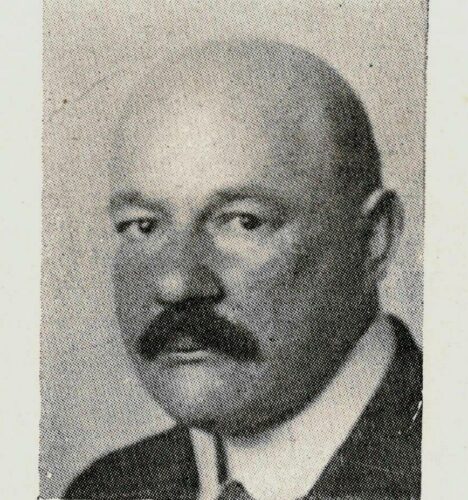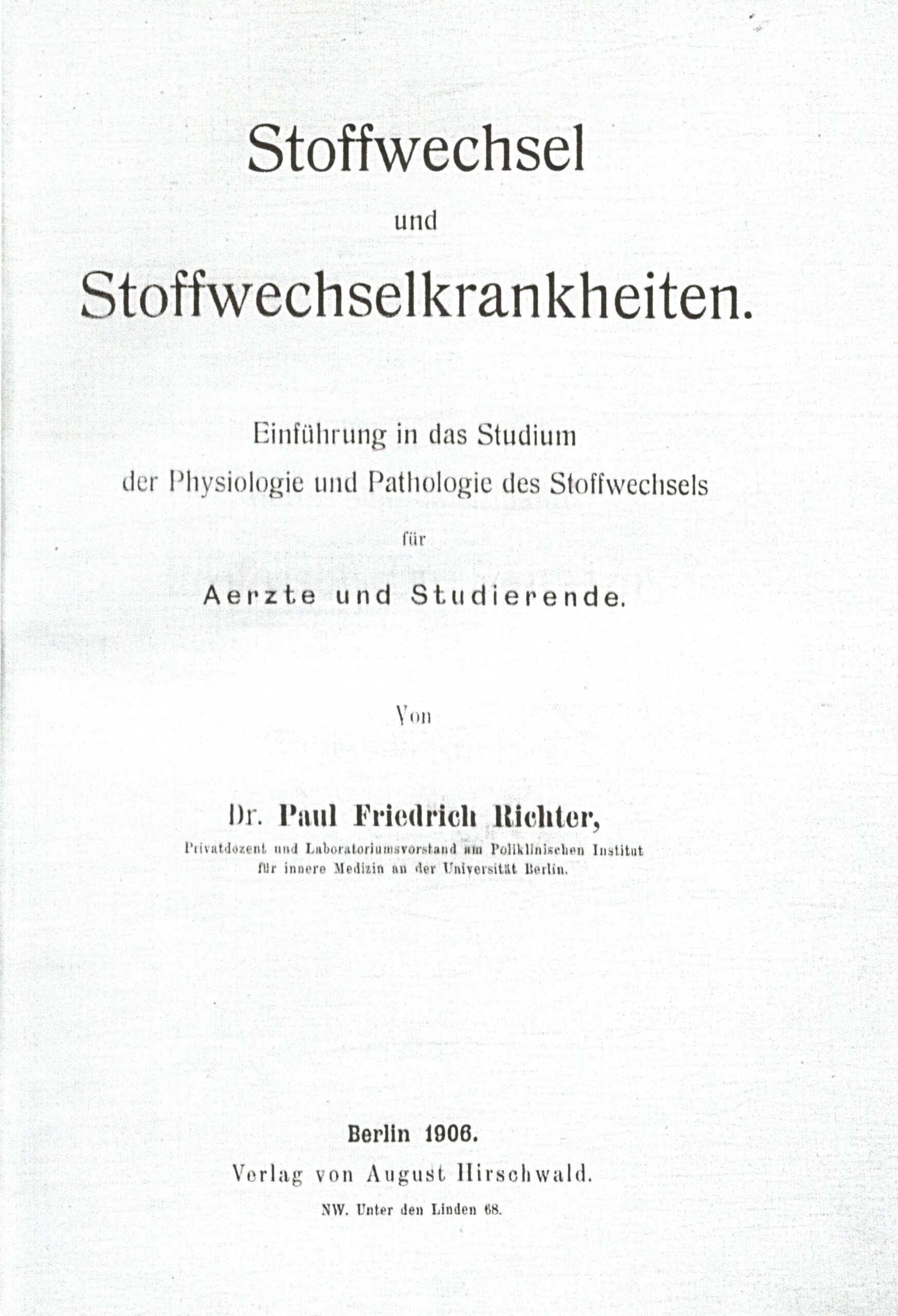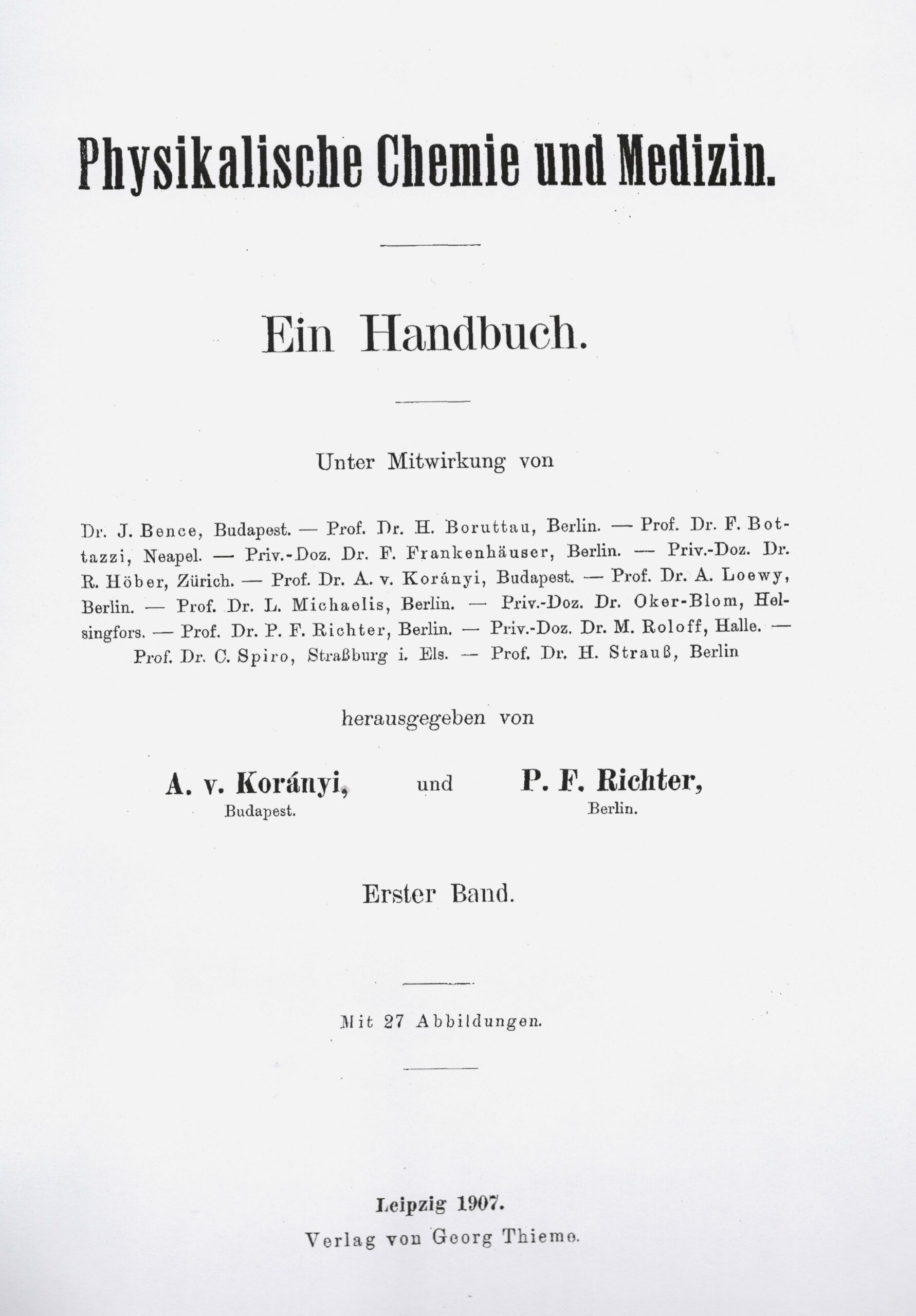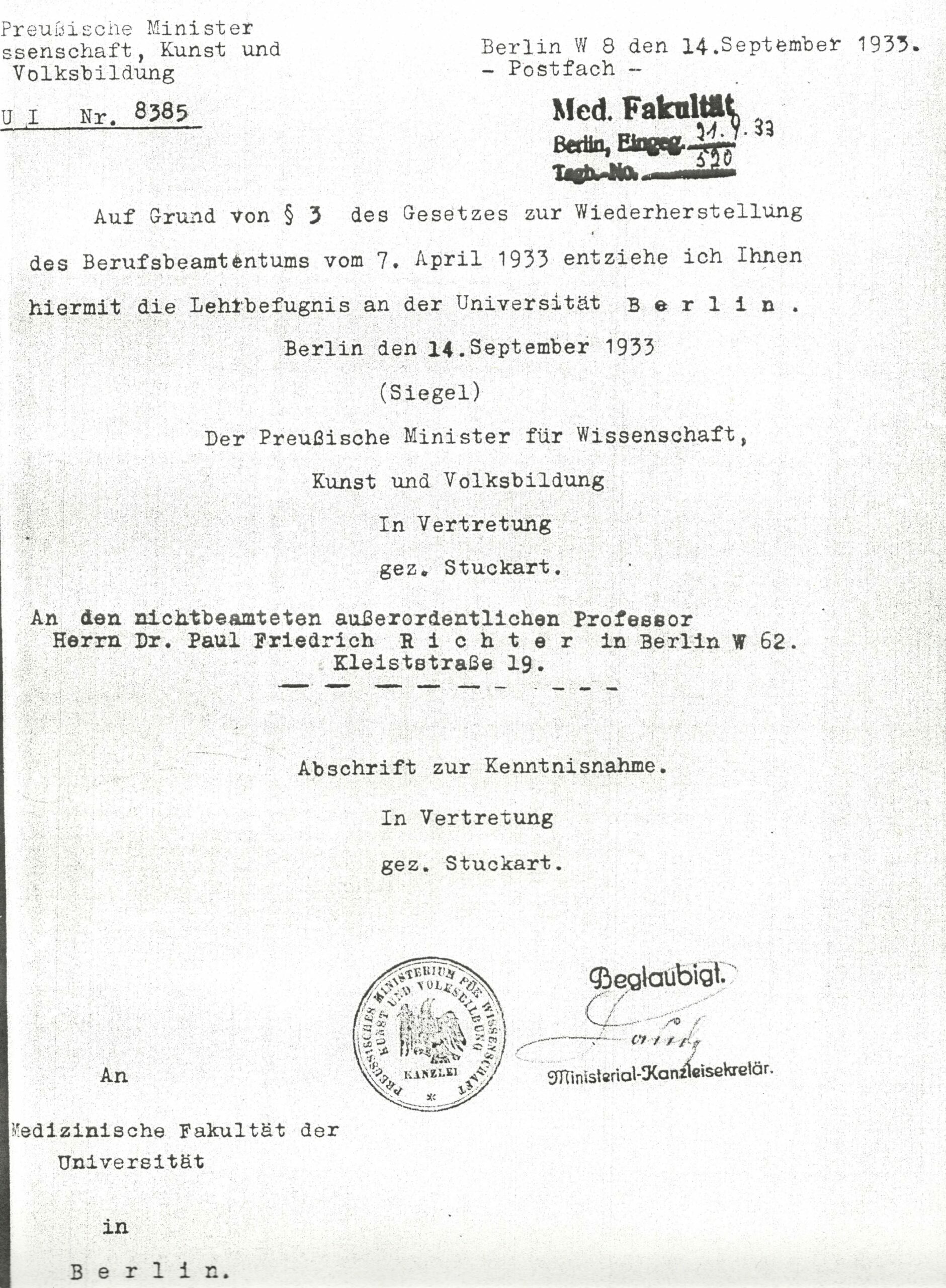Prof. Dr. med. Paul Friedrich Richter
- Beuthen/Bytom, Upper Silesia, Poland, 16.07.1868
- Berlin, 08.10.1934
- Member since 1925
- Berlin
- Specialist in internal medicine
Paul Friedrich Richter was born in Beuthen/Bytom in 1868 as the son of the physician Dr. med. Salomon Salo Richter and his wife Valeska, née Perls.
Education and Places of Work
Paul Friedrich Richter studied medicine at the universities of Göttingen, Heidelberg, and Breslau/Wroclaw. He passed the state examination in Breslau in 1890 and received his doctorate the same year. He worked and did research at the III Medical University Clinic of the Berlin Charité under Hermann Senator from 1894 to 1910. His scientific work focused on questions of physiological chemistry, metabolism in kidney and liver diseases and diabetes mellitus. Richter was an avid publisher and, among other things, wrote the articles on “Funktionelle Nierendiagnostik” and “Chronische Nephritiden” in the multi-volume work ‘Spezielle Pathologie und Therapie Innerer Krankheiten’, Volume 7, 1920, edited by Friedrich Kraus and Theodor Brugsch.
He habilitated in internal medicine at the Friedrich-Wilhelms University in Berlin in 1902. He was appointed professor (extraordinarius) of internal medicine at the University of Berlin in 1921.
He held the post of directing physician at the Department of Internal Medicine at the Berlin-Friedrichshain Municipal Hospital from 1910 to 1933. Richter had been a consultant internist at the Berlin Jewish Hospital Adass Yisroel in Elsässer Strasse 85 since 1923.
1933
It is not clearly documented whether Richter was dismissed from his position as head physician of the Department of Internal Medicine at the Friedrichshain Municipal Hospital in Berlin in April 1933 or whether the 65-year-old retired “voluntarily”.
On 14 September 1933, Richter’s teaching licence at the Berlin University was revoked because of “non-Aryan descent” (§ 3 of the Law for the Restoration of the Professional Civil Service of 7 April 1933).
Paul Friedrich Richter died in Berlin on 8 October 1934 at the age of 66.



